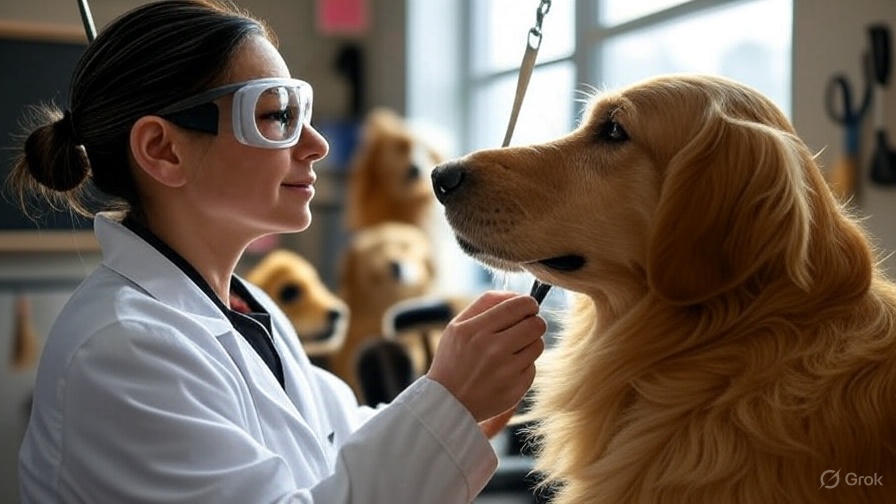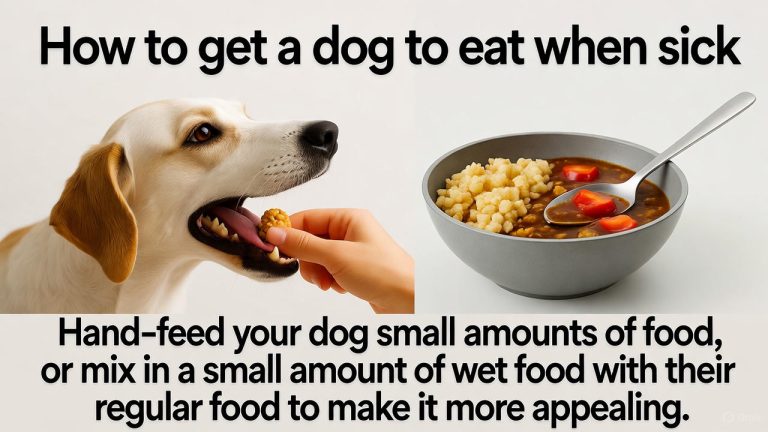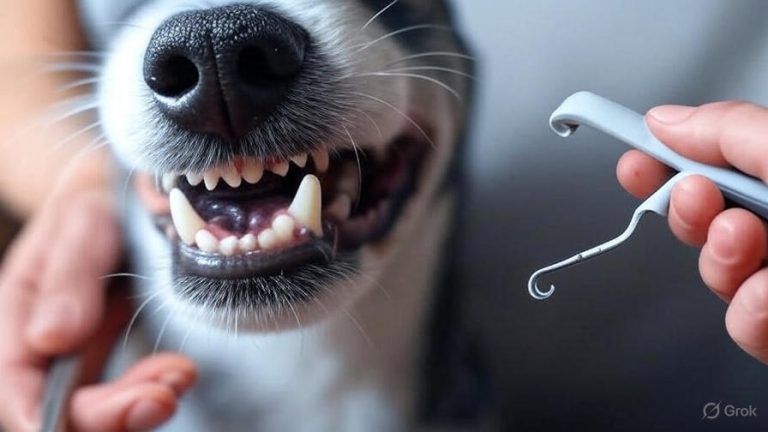How to Become a Dog Groomer?
The pet grooming industry continues to grow as more people treat their furry companions as family members. Professional dog groomers earn solid incomes while working with animals they love. This comprehensive guide shows you exactly how to start your journey toward becoming a skilled pet groomer.
The Growing Demand for Professional Dog Groomers
Pet ownership reached record highs in recent years, with over 90 million dogs living in American households. Dog owners spend billions annually on pet grooming services, creating excellent job opportunities for trained professionals. Many pet parents lack the time, tools, or skills to properly groom their dogs at home.
Professional groomers provide essential services that keep dogs healthy, comfortable, and looking their best. Regular grooming prevents matting, reduces shedding, and helps identify skin problems early. These factors drive consistent demand for qualified groomers across the country.
Essential Skills Every Dog Groomer Needs
Successful dog groomers master both technical and interpersonal skills. Animal handling tops the list of required abilities. You must learn to safely restrain anxious dogs while keeping them calm during grooming procedures. This skill takes practice and patience to develop.
Technical grooming skills include proper brushing techniques, nail trimming, ear cleaning, and bathing methods. You need steady hands for precise scissor work and clipper operation. Different dog breeds require specific grooming styles that take time to learn.
Communication skills help you interact effectively with pet owners. You’ll discuss grooming options, explain procedures, and address client concerns. Building trust with both dogs and their owners leads to repeat business and referrals.
Physical stamina matters because grooming involves standing for long periods and lifting heavy dogs. Good organizational skills help you manage multiple appointments while maintaining clean, efficient workspaces.
Training Options for Aspiring Dog Groomers
Several training paths lead to careers in dog grooming. Each option offers different advantages based on your learning style and schedule.
Vocational Schools and Community Colleges
Many community colleges offer pet grooming certification programs lasting 6-12 months. These programs combine classroom instruction with hands-on practice. Students learn anatomy, breed standards, safety protocols, and business basics. Structured programs often include job placement assistance.
Vocational schools typically cost between $3,000-$8,000 for complete programs. Financial aid may be available for qualifying students. Classroom settings allow you to learn alongside other students and build professional networks.
Online Training Courses
Online pet grooming courses provide flexible learning options for busy schedules. These programs include video demonstrations, written materials, and virtual assessments. However, online courses cannot replace hands-on practice with actual dogs.
Quality online programs cost $500-$2,500 and take 3-6 months to complete. Look for courses that include practical assignments and ongoing instructor support. Some online programs partner with local salons for hands-on experience.
Apprenticeships with Experienced Groomers
Apprenticeship programs offer the most practical training approach. You work directly under experienced groomers while earning a paycheck. This method provides real-world experience with different dog breeds and temperaments.
Apprenticeships typically last 6-18 months depending on your progress. You start with basic tasks like bathing and brushing before advancing to cutting and styling. Mentors teach techniques specific to their salon’s clientele and standards.
Finding apprenticeship opportunities requires contacting local grooming salons directly. Many experienced groomers appreciate dedicated assistants who show genuine interest in learning the trade.
Professional Grooming Academies
Specialized grooming academies offer intensive training programs designed specifically for dog grooming careers. These schools feature experienced instructors, professional equipment, and comprehensive curricula.
Academy programs typically run 4-8 weeks full-time or 3-6 months part-time. Tuition ranges from $5,000-$15,000 depending on program length and location. Many academies maintain relationships with grooming salons for job placement.
Certification and Licensing Requirements
Dog grooming certification requirements vary by state and employer. No federal licensing exists for pet groomers, but professional certification demonstrates your commitment to quality care.
The National Dog Groomers Association of America offers certification testing for experienced groomers. Candidates must pass written exams covering safety, anatomy, and breed standards. Practical testing evaluates hands-on grooming skills.
International Professional Groomers provides another certification option with multiple skill levels. Their program includes safety certification and continuing education requirements.
Some states require business licenses for grooming operations but not individual groomer licensing. Check your local regulations before starting your career. Professional certification often leads to higher wages and better job opportunities.
Getting Hands-On Experience
Practical experience with dogs is crucial for developing grooming skills. Start by practicing on willing friends’ pets or volunteering at animal shelters. Many shelters welcome volunteer groomers to help with adoptable animals.
Local pet supply stores sometimes allow practice sessions with customer dogs. These opportunities let you work with different breeds while building confidence. Always work under supervision when starting out.
Consider working part-time at grooming salons while completing your training. Entry-level positions like bather or assistant provide valuable exposure to professional operations. You’ll observe experienced groomers and gradually take on more responsibilities.
Pet sitting services offer another way to gain animal handling experience. Working with various dog personalities helps develop the calm, confident demeanor that professional groomers need.
Building Your Client Base
New groomers often struggle to attract their first customers. Start by offering services to family, friends, and neighbors at discounted rates. Word-of-mouth referrals from satisfied customers drive business growth in the grooming industry.
Social media platforms showcase your work to potential clients. Post before-and-after photos of dogs you’ve groomed (with owner permission). Share grooming tips and pet care advice to establish yourself as a knowledgeable professional.
Partner with local veterinarians, pet stores, and dog trainers for referral opportunities. These professionals regularly interact with pet owners who need grooming services. Offer referral incentives to encourage ongoing partnerships.
Consider mobile grooming services if your area lacks sufficient salon options. Mobile groomers often command higher prices due to convenience factors. This approach requires transportation and portable equipment investments.
Equipment and Tools Every Groomer Needs
Professional dog grooming requires specialized tools and equipment. Quality tools last longer and produce better results than cheap alternatives. Build your tool collection gradually as your skills and income develop.
Basic Grooming Tools
High-quality clippers are essential for professional results. Look for adjustable blade systems that work with different coat types. Professional-grade clippers cost $200-$500 but provide years of reliable service.
Grooming shears come in various styles for different cutting techniques. Start with basic straight shears, thinning shears, and curved shears. Quality shears range from $100-$300 per pair and require professional sharpening.
Slicker brushes, pin brushes, and undercoat rakes handle different coat types and grooming stages. Professional brushes cost $15-$50 each but work more effectively than pet store versions.
Nail clippers designed for professional use provide clean, safe cuts. Guillotine-style clippers work well for most dogs, while scissor-type clippers suit large breeds better.
Bathing and Drying Equipment
Professional-grade hair dryers speed up the grooming process significantly. Stand dryers allow hands-free operation while you work on other tasks. Quality dryers cost $300-$800 but pay for themselves through increased efficiency.
Hydraulic grooming tables adjust to comfortable working heights and secure dogs safely. These tables cost $400-$1,200 but prevent back strain and improve grooming quality.
Professional shampoos and conditioners formulated for different coat types produce better results than generic products. These specialized products cost more but use less per bath and create happier customers.

Career Opportunities and Salary Expectations
Dog groomers work in various settings with different earning potential. Salary ranges depend on location, experience level, and business model.
Grooming Salon Employment
Most new groomers start as employees in established salons. Entry-level positions typically pay $12-$15 per hour while learning. Experienced groomers earn $18-$25 per hour plus tips in most markets.
Commission-based pay structures reward productive groomers with higher earnings. Typical commission rates range from 40-60% of service fees. Skilled groomers can earn $40,000-$60,000 annually through commission work.
Employee benefits vary widely between salons. Some offer health insurance, paid time off, and continuing education support. Others provide only basic wages without additional benefits.
Self-Employment Opportunities
Experienced groomers often start their own businesses for greater earning potential. Mobile grooming services eliminate overhead costs while commanding premium prices.
Salon ownership provides the highest income potential but requires significant capital investment. Successful salon owners earn $50,000-$100,000 annually after covering expenses.
Home-based grooming businesses offer middle-ground options with lower startup costs. Converting garage spaces or building dedicated facilities costs less than commercial leases.
Specialization Areas Within Dog Grooming
Specialized services can increase your earning potential and job satisfaction. Different specializations require additional training but often pay premium rates.
Show Dog Preparation
Show dogs require precise grooming according to breed standards. This specialization demands extensive knowledge of breed-specific cuts and styling techniques. Show groomers often travel to dog shows and earn higher fees for their expertise.
Learning show grooming requires working with experienced mentors and studying breed standards carefully. Competition judging experience helps develop the eye for detail that show clients expect.
Creative Grooming and Pet Styling
Creative grooming involves artistic techniques like color application, pattern shaving, and sculptural cuts. This specialization appeals to clients who want unique looks for their pets.
Creative groomers need artistic skills beyond basic grooming abilities. They use pet-safe dyes, stencils, and advanced cutting techniques to create eye-catching designs.
Therapeutic and Special Needs Grooming
Some groomers specialize in anxious, elderly, or disabled dogs requiring extra patience and gentle handling. These specialists often charge higher fees for their specialized skills and equipment.
Working with special needs dogs requires additional training in calming techniques and adaptive equipment. Veterinary knowledge helps identify health issues that affect grooming procedures.
Health and Safety Considerations
Dog grooming involves potential safety risks that proper training and precautions can minimize. Bite prevention ranks as the top safety priority for professional groomers.
Learning to read dog body language helps predict aggressive behavior before bites occur. Proper restraint techniques keep both groomers and dogs safe during procedures. Never ignore warning signs like growling, stiff posture, or rapid panting.
Sharp tools require careful handling and maintenance. Keep blades sharp and clean to prevent injuries and infections. Store tools securely when not in use to prevent accidents.
Chemical safety matters when using shampoos, conditioners, and cleaning products. Read labels carefully and provide adequate ventilation in work areas. Some dogs have allergic reactions to grooming products.
Back injuries commonly affect groomers who lift heavy dogs or work in poor positions. Use proper lifting techniques and maintain good posture throughout your workday. Invest in ergonomic equipment to reduce physical strain.
Continuing Education and Professional Development
Successful groomers never stop learning new techniques and skills. The pet grooming industry constantly evolves with new tools, products, and methods.
Attend grooming trade shows and conventions to see the latest equipment and techniques. These events offer hands-on workshops and networking opportunities with industry professionals.
Join professional grooming associations for access to educational resources and certification programs. These organizations provide continuing education credits and industry updates.
Online courses and webinars offer convenient ways to learn new skills without traveling. Many equipment manufacturers provide free training on their products.
Starting Your Dog Grooming Business
Entrepreneurial groomers can build successful businesses with proper planning and execution. Business success requires more than just grooming skills.
Research your local market to identify competition and pricing strategies. Visit existing salons to observe their operations and client interactions. Identify gaps in services that your business could fill.
Develop a detailed business plan covering startup costs, projected income, and marketing strategies. Most grooming businesses require $20,000-$50,000 in initial investment for equipment and setup.
Obtain necessary licenses and insurance coverage before opening. General liability insurance protects against accidents and property damage claims. Professional liability coverage handles grooming-related injury claims.
Location matters significantly for grooming businesses. High-traffic areas with good parking attract more customers but cost more to lease. Home-based operations save money but may face zoning restrictions.
Technology and Modern Grooming
Technology increasingly impacts the dog grooming industry. Online booking systems streamline appointment scheduling and reduce phone interruptions. Point-of-sale systems track customer preferences and grooming histories.
Social media marketing helps groomers showcase their work and attract new clients. Photo editing apps enhance before-and-after images for maximum impact. Video content demonstrates techniques and builds professional credibility.
Mobile payment systems allow convenient transactions without cash handling. Many customers prefer contactless payment options for safety and convenience.
Grooming software helps manage customer records, scheduling, and inventory. These systems improve efficiency and provide valuable business insights.
The Future of Dog Grooming Careers
The pet grooming industry shows strong growth potential as pet ownership continues rising. Aging baby boomers increasingly rely on professional services for pet care needs they cannot handle themselves.
Premium grooming services targeting affluent pet owners drive industry growth. Luxury services like spa treatments, aromatherapy, and organic products command higher prices.
Mobile grooming continues expanding as busy pet owners value convenience. Electric grooming vans and improved battery technology make mobile services more practical.
Franchise opportunities provide structured business models for new salon owners. Established brands offer training, marketing support, and proven operating systems.
Conclusion
Becoming a professional dog groomer offers a rewarding career path for animal lovers with entrepreneurial spirits. Success requires dedication to learning proper techniques, building client relationships, and maintaining professional standards.
Start your journey by researching training options in your area. Hands-on experience with dogs builds confidence and skills that classroom learning alone cannot provide. Professional certification demonstrates your commitment to quality care.
The grooming industry provides various career paths from salon employment to business ownership. Specialization opportunities allow groomers to focus on areas matching their interests and skills.
With proper training, dedication, and business acumen, dog grooming offers stable employment and growth potential in the expanding pet care industry. Take the first step by contacting local training programs or grooming salons about opportunities to begin your new career path.







